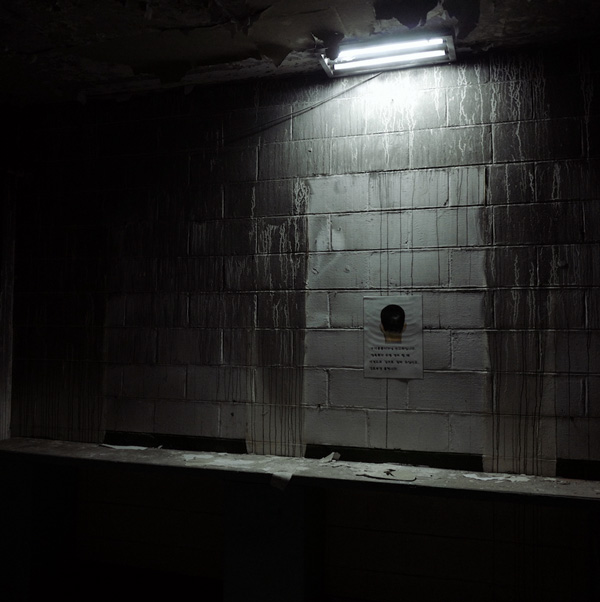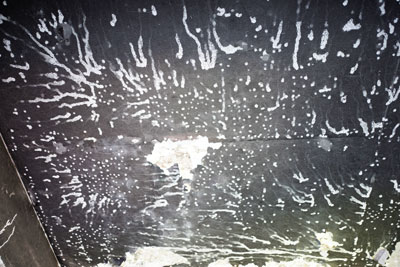Site-Specific Installation with lights, motorized lights, motorized & synchronized screens, speakers, programmed balls, single-channel video, hospital artifacts.
Commissioned by
Gwangju Biennale Foundation
Artist: Apichatpong Weerasethakul
Production Manager : Sompot Chidgasornpongse
Producer: Jimmy
Lighting Designer: Pornpan Arayaveerasid
Visual Director: Rueangrit Suntisuk
Sound Designer: Akritchalerm Kalayanamitr
Technical Director : Laphonphat Doungploy
Project supervision: Ara Cho
With permission support from: Kang Ha Lee Museum, Sunhui Jung
First installed at the 12th Gwangju Biennale, Imagined Borders. Sep. 7 ~ Nov. 11, 2018
Showtimes:
- 17:30 pm - 18:30 pm
- 19:00 pm - 20:00 pm

Constellations takes place at the abandoned Gwangju Army Hospital, one of the significant sites during the 1980 Gwangju Uprising. The installation is situated at the hospital’s recreational facilities that consist of a pool room, a barber, and a multi-purpose hall. Apichatpong introduces possible scenarios of recollections by shadow plays and physical movements of mechanical objects.
Place I
Memory started in a courtyard with a pond. A white corridor ran around it, protecting this natural sanctuary. In the aisles, the patients and their relatives slept or stared at the emerald water. The air smelled of disinfectant. The passage led into a building with a sudden drop of brightness, from sunlight to fluorescent tubes. On the wall loomed one sign after another: Radiology, Pathology, Orthopedics. Then, almost hidden in a corner, was Pediatrics. The office was absent of doctors. On a desk near the windows were a stethoscope, a microscope, and a stack of medical books. Within the pages there were pictures of cells dyed in radiant colors.
Not far from the hospital compound stood a wooden house. It hosted a small black and white television that once broadcasted an army personnel declaring a State of Emergency. It also once showed non-stop cartoons while the paramilitary stormed a university and gunned down protesting students. Next to the house was a greenhouse filled with orchids. Their purple and white flowers were suspended over a blanket of soot that resembled black snow. Situated five houses away was the hospital’s main gate. Outside the gate, the main road was lined with dilapidated shophouses. One of them was owned by a Chinese who sold one-Baht comics and candies (some of which I stole). Across the street was a newly-built complex with a giant cinema at its center, called Kaen Kaam. This theatre specialized in showing historical epics, mostly about the fights between Thailand and Burma. Also epic were the multi-story hand-painted billboards. They often depicted a line of half-naked men and their swords. Above or behind them in the background, the film titles were painted as if they were carved from stone. In the films, the Burmese always scorched villages. The houses, made with panels of dried rice straws, ignited instantly. The flames spread from one roof to the next, collapsing them, exposing the skeletal columns wavering in the heat.
Place II
In one of Ray Bradbury’s short stories, the Powerhouse, a couple take shelter inside a power plant. As the night rain bombards the building, the wife synchronizes with the machines. Her consciousness fuses with the electrons, which leap across the landscape towards the cities and houses and rooms. Upon a thousand flicks of light switches, she experiences flashes of human activities and emotions, transmitted through the electricity. She is enlightened by the bursts of filaments.
In one of Ray Bradbury’s short stories, the Powerhouse, a couple take shelter inside a power plant. As the night rain bombards the building, the wife synchronizes with the machines. Her consciousness fuses with the electrons, which leap across the landscape towards the cities and houses and rooms. Upon a thousand flicks of light switches, she experiences flashes of human activities and emotions, transmitted through the electricity. She is enlightened by the bursts of filaments.
Home. Hospital. Cinema.

Place III
In its current form, the Gwangju Military Hospital is no longer a host but a parasite. It feeds on the memories of the city inhabitants - the bullet scars on the buildings, the smoke, the perished.
For the past few years, I have produced videos that focus on fire, shadows, and caves. These primitive elements navigate us towards the origin of moving images and myth-making. In retrospect, this hospital in South Korea can serve as an imaginary location for those videos, the cave that was never before visible. The place exposes the amalgam of memories of home and politics, fact and fiction. It is as if the fires have found their place and together create a special kind of cinema that only exists in dreams.
This dream machination has a basis in seeing and not seeing. On that note, I recall an American filmmaker, Stan Brakhage. He had made several movies without a camera. He scratched and manipulated the celluloid’s surface, like a child or like a careful surgeon. His pursuit was to replicate 'closed-eye vision’, a phenomenon that at times occurs when we close our eyes and experience a burst of colored particles. A constellation seems to swirl under our eyelids. It is this process that allows us to witness our internal illumination - the electrical charges within the retina, without light.
In Gwangju, I look for afterimages, as if remaking Brakhage in an architectural form. Here, shadows are the eyelids. In honoring burdened memories, sometimes we can see within our own shadows more clearly only when they are devoured by other shadows.
Apichatpong Weerasethakul
21 July 2018













